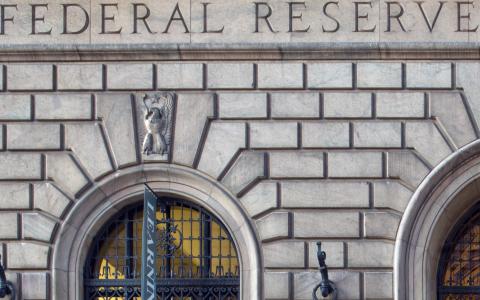
(MarketWatch) - The Federal Reserve moved in a big way on Wednesday to immediately lower borrowing costs for the first time in four years.
The central bank’s slashed its short-term policy rate by half a percentage point, bringing it down to a target range of 4.75% to 5%.
But Wall Street still didn’t get exactly what it wanted. Longer-dated Treasury yields, which are used as a peg to price auto loans, mortgages and more, were climbing off the year’s lows touched earlier in the week.
Higher yields suggest that, despite the Fed’s big rate cut out of the gate, Wall Street was disappointed by what the central bank telegraphed about the months to come.
“We believe rates across the curve had come down too far, too fast,” said Cindy Beaulieu, chief investment officer, North America, at Conning, which has about $160 billion in assets under management.
While the initial rate cut of 50 basis points came as a surprise, Beaulieu said Fed Chair Jerome Powell used his afternoon press conference to telegraph a careful approach toward cutting rates in the future.
Powell called Wednesday’s move “the beginning of this process,” but said the Fed isn’t in a rush and will act carefully at each subsequent meeting. “We can make a good strong start. And I’m very pleased that we did,” he noted.
Beaulieu thinks that approach sounds prudent, even if it isn’t what all investors wanted to hear. “We still have a solid economy, and a consumer who is not giving up,” she said. “Longer rates moving higher makes a lot of sense.”
The 10-year Treasury yield BX:TMUBMUSD10Y rose 4 basis points to 3.685% as of 3 p.m. Eastern time, coming off lows for the year set earlier in the week.
Beaulieu thinks the 10-year yield could end the year north of 4%, and even at 4.25%. “The market talks about pricing in a soft landing, but when driving rates so low, that sounds a lot more like a recession,” she said.
Volatility in the bond market has been running high since the Fed started hiking rates in 2022, causing historical losses in bonds and whiplash across financial markets. While inflation and rate hikes no longer look like the big threats they were to investors two years ago, shocks in the rates market can still be painful for portfolios.
“We’ve seen a couple of times where the bond market gets ahead of itself, as the equity market is also wont to do,” said Karen Manna, fixed-income portfolio manager at Federated Hermes, which has about $780 billion in assets under management.
“We all want to look ahead and see around the corner. But we can’t predict what happens with the economy,” Manna told MarketWatch.
With the economic backdrop still uncertain, especially if the housing market perks back up, Beaulieu at Conning isn’t big on adding duration to bond portfolios, nor convinced the Fed can get inflation all the way back down to its 2% yearly target — especially if it keeps lowering rates.
She does, however, expect spreads — or the extra compensation earned on bonds with credit risks — to widen in the coming months, especially heading into the November presidential election.
Manna at Federated said the election will be top of mind for investors now that the first rate cut has arrived. She thinks investors should brace of a prolonged period of uncertainty, both in terms of the Fed’s next moves and the reaction in rates markets.
Manna added that the time has come to monitor liquidity in portfolios, so that investors won’t end up stuck in an illiquid asset class and then be compelled to move.
Stocks ended the day lower, but still in the ballpark of record territory — with the Dow Jones Industrial Average DJIA down 0.3% at 41,503, the S&P 500 SPX shedding 0.3% and the Nasdaq Composite COMP ending 0.3% lower, according to FactSet data.
By Joy Wiltermuth



